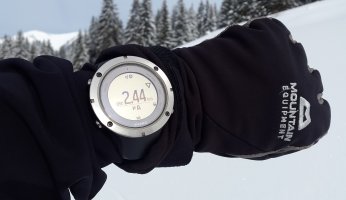How Long Do Running Shoes Last?
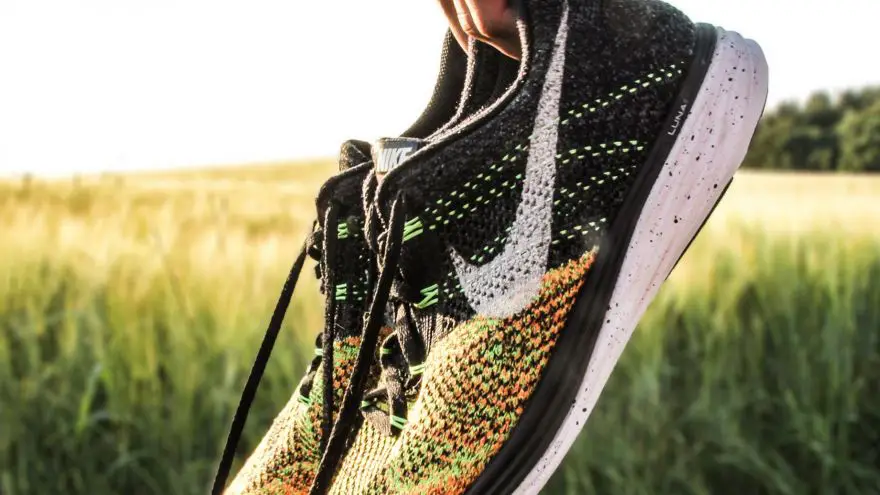 How Long Do Running Shoes Last?
gearweare.net
How Long Do Running Shoes Last?
gearweare.net
People that love to run, know that they need a good pair of running shoes. People have all different types of ways that they walk, and some doctors suggest putting insoles in them, so your shoes don’t wear and cause your gait to be thrown off. Have you ever noticed that after a few years, your shoes or boots still look perfect, but the heel is worn down either on the outer side of the foot or the inner hand of the feet? People that have problems with their feet, experience more back pain, leg pain, and hip pain.
Talk to a podiatrist and get a foot check-up if you love to run or walk and see if your feet are straight enough. Most likely, your doctor will suggest insoles for your shoes. They range from relatively inexpensive, maybe under ten bucks, to 40 bucks from heel stores that specialize in insoles. Sometimes if you have proper insurance, insoles can cost almost 500 dollars, and your insurance will pick up the tab. The majority of running shoes that wear out quicker are because people don’t take care of their feet. Insoles help the longevity of your running shoes.
Table of Contents
When to Replace Running Shoes?
Walking and running is one of the cheaper forms of exercise since you don’t need a gym membership to run. All you need to invest in are a good pair of running shoes and comfortable running socks. Running shoes are an essential part of your running form. Most running shoes are suitable for between 400 and 500 miles, but some people get more extended use out of their running shoes. Most of the wear that meets the eyes occur on the fabric and the bottom or sole of the running shoe. The part of the shoe that causes injuries are the midsole areas of both boots. If you want to learn more about how to choose your running shoes, read our blog.
The midsole is made of a thick layer of foam. This foam cushions the impact that your feet have with the ground. The foam is called EVA foam, and it’s made to be robust and resilient; however, this foam still wears out over time. Your shoes will also wear after some time, especially if you are using them frequently. That is why it is important to invest in a good pair of running shoes when you notice that these are starting to feel a little bit uncomfortable.
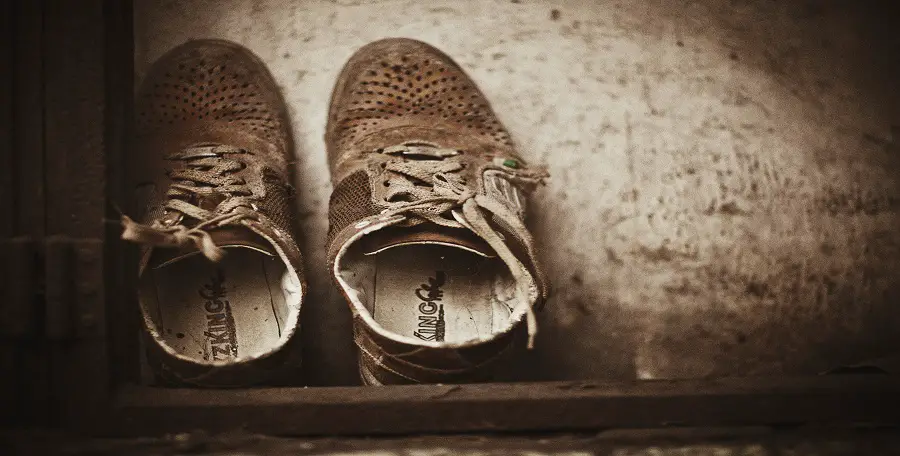
Shock Absorption
By the time the average runner has run 50 miles in a new pair of running shoes, the foam that cushions the feet has decreased 25%. Once you run 150 miles, the cushioning of the shoe drops to 33%, and down to 40% after 500 miles. By 500 miles, the cushion in your running shoes levels off, and there is not much left of your good running shoes. It doesn’t matter what brand you choose, the shoes that are used for running all wear out around 500 miles.
What Affects The Life of Running Shoes?
There are three things that affect the life of the running shoe. One is the terrain that a runner runs on. If they run on a road, trail track, or a mixture, this is the most significant factor that determines the life of the shoe; and how long the shoe will last. The most running shoe has information that will tell a person what the ideal terrain is for that particular running shoe.
If the running shoes don’t have any information to tell you, then you use the shoes just for running on the road. In all reality, every runner is going to run into a different terrain at some point; if they cut through a park and start running up a rocky hill. Parks still have dirt and stones that the soles aren’t used to. The main point is to make sure that you use the running shoes for road running if that is the reason you picked this particular brand of shoe. Otherwise, your long-distance running shoes will wear out much more quickly.
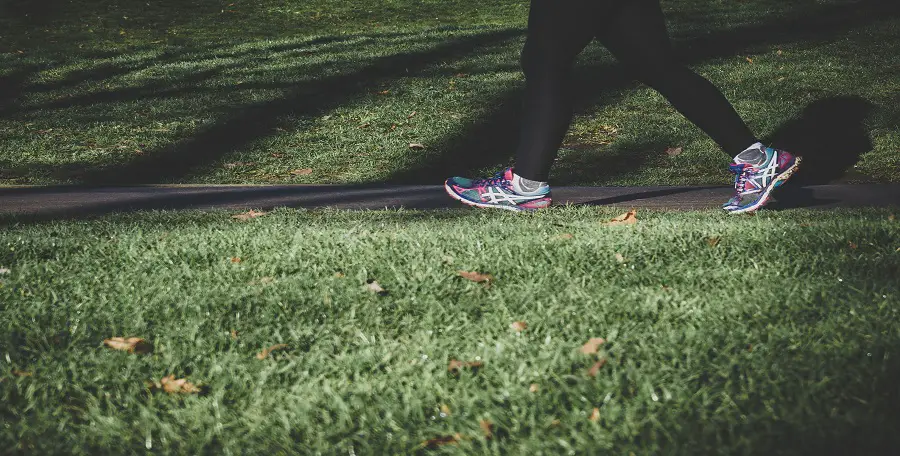
Running Style
The way you run and how your foot hits the pavement is also a factor in the longevity of the running shoes. If you aren’t sure how your foot hits the pavement; look at the bottom of the sole and look at how the shoe wears out. Shoes generally wear out under the big toe and on the inside or outside of the running shoe. Many times the outer sole breaks and exposes the midsole of the running shoe.
In severe cases, the whole sock and foot can come through the shoe. The midfoot is the area under the ball of the feet. If you are a heel striker, which is typical for long-distance runners, you will need to replace your shoes more often. The rest of your shoe might be in excellent shape, but the heel is entirely shot, and your foot and ankle are more prone to injuries.
There is no right or wrong way to run when it comes to the way your foot hits the ground or the impact force of the shoe. It’s essential to understand what kind of runner you are, and the most important thing is to know when to get new running shoes and which ones are perfect for you.
Your Build
Since there are factors that affect the shoe from the bottom, the most significant factor is your build, and that includes how you distribute your weight. Your height also plays into this factor. This also plays a role in how long your shoes will last. If you weigh 220 pounds and are husky and under six feet, your shoe will wear differently than 120 pounds tall, lean, and muscular, female.
Running shoes look at the size of the average runner, and this is how they create a profile of the runner. This is what is taken into consideration when companies design a running shoe. If one is more massive (check the guide on shoes for heavier runners) than the average pattern, the shoe wears out more quickly. If one is lighter in weight than the ordinary model, the shoe lasts longer.
We say the same about short vs. tall runners. If your build is off the charts of the average profile for height, there are different styles of running shoes you should consider. The same refers to the runner who is shorter than average. If you are a larger person, you will need cushioned running shoes than those who are smaller. If you don’t know what style of shoes to buy, make sure you ask the salesclerk. You want to get the most bang for your buck, so your shoes lasts longer.
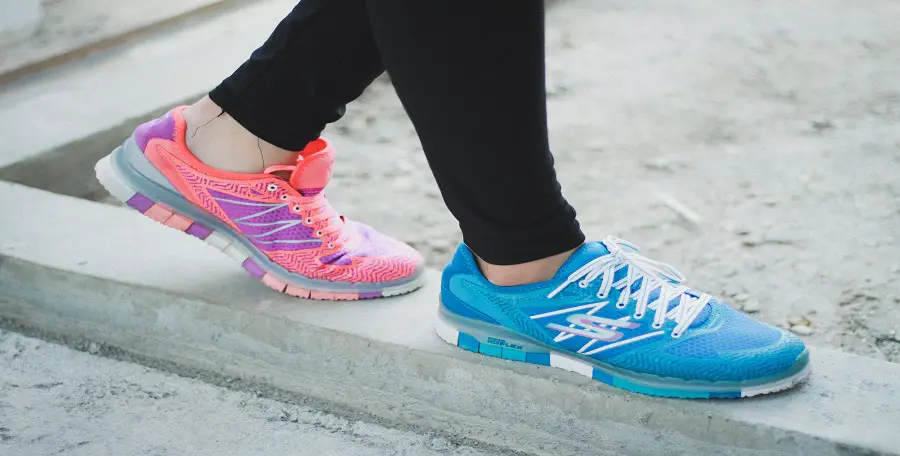
Shoes are Something You are Investing in For Yourself
Remember, shoes are something you are investing in for yourself. Running shoes can be expensive, especially if you are the kind of person that participates in events. You don’t want to go through a pair of running shoes every few months. So think about drying your shoes after you run if they are wet. Buy two pairs so you can rotate and prolong the longevity. Take the laces and untie them; so you don’t run down the back of your shoe by sliding them on and off without untying the laces. Make sure your shoes fit correctly and wear the correct crew socks. Remember that quality socks are a good match for the quality shoes you invested in. Shoes are designed to be protected from the outside to the inside, so it’s essential to wear good socks!









